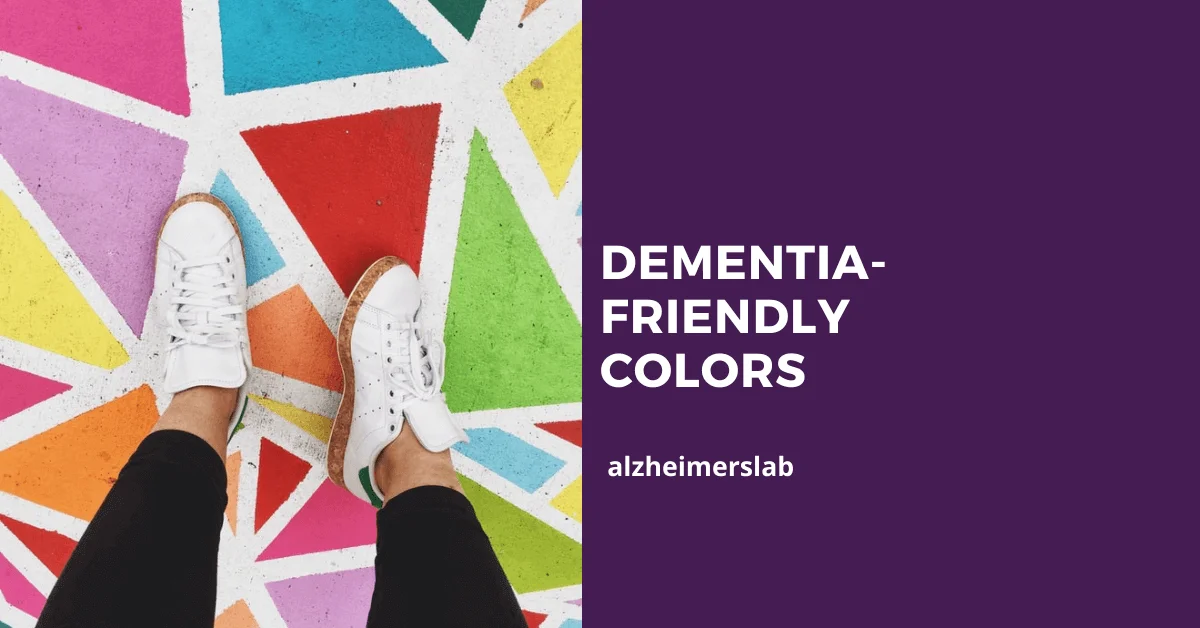Scientifically-Proven Dementia-Friendly Colors
Most caregivers are well aware of the profundity of the environment around a dementia-affected person. The surroundings can dictate how a cognitively impaired person feels on a given day. This post is about enhancing a Dementia patient’s surroundings with scientifically approved Dementia-friendly colors.
According to a paper by the University of Bologna, Italy, Dementia patients when given a choice prefer violet and brown over other colors. The aim of this study was to find out the emotional and psychophysical state of Dementia patients by their color preferences. Researchers concluded that people with Dementia prefer auxiliary colors over basic solid colors. Keep reading to know more.
Why are colors a key constituent of a Dementia patient’s life?
Colors allow someone with cognitive impairment to express their opinions and inner feelings without using words. People with memory issues often struggle to articulate their thoughts. Good thing is, caregivers can help them communicate non verbally.
For this, a caregiver needs to know what specific colors the person with Dementia resonates with.
If they seem to prefer a particular set of colors, you will know what mental state they are in. You will know if they are feeling positive, hopeful, numb, sad, angry, or creative.
Here’s a free of cost tool for you:
The Lüscher color test is a tool that allows you to learn about yourself or the care recipient by going through a series of steps. Each step involves picking a color from a set.
This test allows us to know the inner life of someone suffering from Dementia. It will help you learn about the deepest insecurities of your loved one. The test will give you a glimpse of what happens in their thoughts, emotions, and feelings.
Trying out the Lüscher color test can benefit a caregiver as well. It will solidify your relationship with the care recipient. You won’t get upset or freak out the next time they throw a fit or lash out at you. You will know what’s triggering them to behave the way they do.
What is the Lüscher color test?
The Lüscher color test is a psychological test invented by Max Lüscher, A Swiss psychotherapist. The primary objective of this test is to determine a person’s psychophysical state based on his or her color preferences.
What’s interesting about this test is you can take it yourself from the comfort of your home. You don’t need to visit a therapist. Psycho-tests offers a free Lüscher color test for caregivers and their care recipients.
Here’s what you need to know before you (or the care recipient) take the test.
- Pick your favorite color card from the eight cards offered to you.
- Next, pick your second favorite card from the remaining seven cards.
- Next, pick your third favorite card from the remaining six cards.
- Keep picking until you are left with no cards.
Once you are done with the test, the algorithm will provide you with an instant result. I recommend both the caregiver and the care recipient take this test. Caregivers need to be aware of their mental and emotional states as well.
I took the test a few times and found the results to be fairly accurate. Also, note that the Lüscher color test is a scientifically proven technique to determine one’s psychological state— it is not a pseudoscience.
What are basic and auxiliary colors?
The basic colors are solid colors such as blue, red, yellow, and green. When you mix two or more basic colors, you get auxiliary colors such as violet, brown, gray, black, etc. Sometimes auxiliary colors are also denoted as red-orange, yellow-orange, yellow-green, blue-violet, etc.
According to the Italian study (I mentioned previously in this post), Dementia-affected individuals lean more towards auxiliary colors. They like it when two solid colors are mixed together.
It is safe to assume that all auxiliary colors are Dementia-friendly. You can give the care recipient a set of auxiliary colors to choose from. Pick the ones they really like, and use those colors in your home.
What do basic and auxiliary colors represent?
According to Max Lüscher, there are a total of eight colors (four basic and auxiliary) that can be used to represent a person’s emotional and psychological state. Take a look at the table below.
Basic colors
| Color | What does it represent? |
| Blue | Depth of feeling |
| Green | Elasticity of will |
| Red | Force of will |
| Yellow | Spontaneity |
Auxiliary colors
| Color | What does it represent? |
| Violet | Identification and enchantment |
| Brown | Relates to bodily senses |
| Black | Renunciation |
| Gray | Non-involvement and concealment |
Source – Sewanee University
It’s the little things that matter
Color preferences of an individual can help caregivers understand the inner world of someone with Dementia. Once you know what colors the care recipient prefers around him or her, you can begin to make changes to their physical environment.
Most nursing homes or hospital rooms have a corporate feel to them. You will rarely see a brightly colored hospital room. Family caregivers can make small changes to their home to make it more congenial for someone with Dementia.
To wrap things up, make sure to include items that have violet or brown in the room of a care recipient (curtains, bedsheets, pillow cover, posters, etc). All auxiliary colors are Dementia friendly, but violet and brown in particular are one of the most Dementia-friendly colors.

